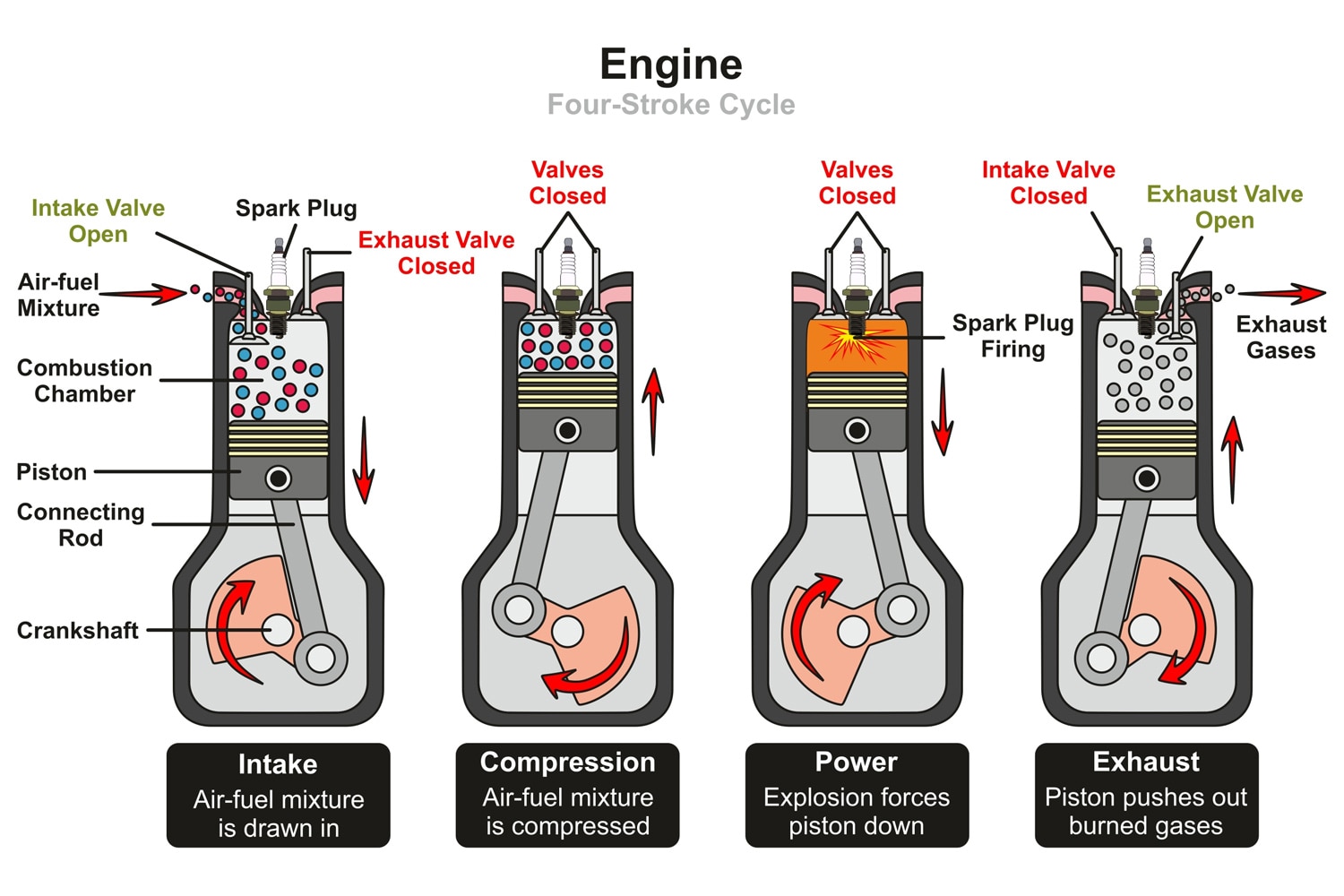Car Engines Explained: Cylinders, Layouts, and More
Here's your crash course on internal-combustion power plants.
 Shutterstock
Shutterstock
In a nutshell, internal-combustion engines rely on fuel, air, and spark to create a series of controlled explosions inside the block’s cylinders. Those explosions push pistons within the cylinders, which turn a crankshaft connected to a transmission. This sends torque to a driveshaft and the wheels—all of which eventually gets you to the grocery store.
Sure, there are a number of different ways automakers have done this over the years, but the majority of cars produced have followed the same basic formula.
Layout and Arrangement
We often describe engines by the number and arrangement of their cylinders. With few exceptions, automakers arrange an engine’s cylinders in one of three ways: in a line (e.g., an inline-four or straight-six), in a V (e.g., a V6 or V8), or horizontally opposed (e.g., a flat-four or six-cylinder boxer). For packaging reasons, most manufacturers situate the engine in the vehicle either transversely (across the width of the vehicle, perpendicular to the direction of travel) or longitudinally (90 degrees from transverse, with the engine aligned with the center of the vehicle).
Number of Cylinders and Displacement
Contrary to what you might have heard, neither the number of cylinders nor their configuration has the last word on power output in modern engines, though we can generalize and say engines with more cylinders typically make more power than those with fewer. The more important measurement is displacement—that is, the combined volume (commonly measured in liters or cubic inches) of the cylinders. For instance, a 3.0L, four-cylinder engine might make more horsepower than a 2.8L six-cylinder.
Turbochargers Help Small Engines Make Big Power
Both cylinder count and displacement have become less relevant in recent years due to forced-induction devices such as turbochargers. These components force (hence the name) more air into the combustion chambers, resulting in larger, more powerful and fuel-dense explosions. This has allowed automakers to literally downsize their engines while maintaining output levels.
Of course, as turbochargers push more air into the cylinders, the engine uses more fuel, which isn’t great for efficiency. Fortunately, turbochargers function only when needed — say, when you’re accelerating, but not when you’re cruising down the highway. For the most part, these so-called boosted engines tend to offer decent fuel efficiency if you can resist the urge to dip into the boost.
Hybrids Offer Power and Efficiency
More recently automakers have turned to electrification to augment engines. These hybrid systems have the edge when it comes to efficiency in internal-combustion vehicles. Hybrid powertrains combine an engine and an electric motor or motors coupled with a battery pack. Some hybrids rely primarily on the engine, using the electric motor(s) to improve efficiency in certain situations, while others rely primarily on the electric motor(s), using the engine to provide electricity as needed; depending on the hybrid system, the engine and motor(s) can work simultaneously.
While some hybrid vehicles can be quite powerful, the name of the game is efficiency, with the electric motor(s) allowing the vehicle to use little or no fuel, particularly around town. The biggest determining factor of a hybrid’s electric-only cruising range is the size of its battery, and this varies greatly among models. Modern examples can offer anywhere from 8 to more than 125 miles of electric cruising range.
Written by humans.
Edited by humans.
 James Tate
James TateJames Tate has been writing about cars professionally for 15 years and he remains obsessed with them. He enjoys digging into the incredible technology of new vehicles as much as he likes the tactility and the driving experience of yesterday’s cars. He has written for a variety of legacy automotive magazines and websites.
Related articles
View more related articles